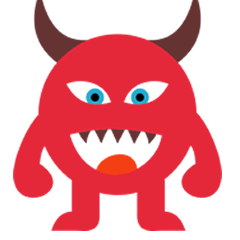`
If you enjoy smoking herbs or tobacco, you may have heard of glass bongs. Glass bongs are devices that use water to filter and cool the smoke from burning herbs or concentrates. They can provide a smoother and more flavorful smoking experience than other methods, such as joints, pipes, or vaporizers. But did you know that there are many different types and shapes of glass bongs, and each one can affect the smoking experience differently? In this blog post, we will explore some of the most popular types and shapes of glass bongs, and how they can enhance your smoking session.
Types of Glass Bongs
There are many ways to classify glass bongs, but one of the most common ways is by the type of percolator they have. A percolator is a glass filter suspended into the water chamber that creates bubbles and smooths the smoke. Percolators can come in various shapes and designs, such as tree, showerhead, honeycomb, turbine, matrix, and more. Each percolator has its own advantages and disadvantages, such as the amount of diffusion, drag, noise, and cleaning difficulty. Here are some of the most popular types of glass bongs based on their percolator:
-
Percolator Bong:
This is a general term for any bong that has a percolator in it. Percolator bongs can have different shapes, such as straight tube, beaker, round base, or recycler. The main benefit of a percolator bong is that it provides a smoother and cooler hit than a regular bong without a percolator. The downside is that it can be harder to clean and may require more water and maintenance. -
Bubbler Bong:
This is a type of percolator bong that is a hybrid of a bong and a pipe. It has a smaller size and a built-in bowl that makes it easy to use and carry around. Bubbler bongs are ideal for those who want a portable and discreet device that still offers some water filtration. However, bubbler bongs may not be as effective as larger bongs in terms of cooling and filtering the smoke. -
Mini Bong:
This is a type of percolator bong that is very small and compact. It usually has a simple design with one or two percolators. Mini bongs are great for those who want a quick and easy hit that doesn’t require much preparation or cleaning. They are also very affordable and convenient to store. However, mini bongs may not offer the same level of smoothness and flavor as larger bongs. -
Scientific Bong:
This is a type of percolator bong that is made of laboratory-grade borosilicate glass, which is resistant to heat and shock. Scientific bongs have a sleek and minimalist design with clear glass and precise measurements. They often feature multiple percolators and chambers that create optimal diffusion and filtration. Scientific bongs are perfect for those who want a high-quality and durable device that delivers consistent and smooth hits. However, scientific bongs can be very expensive and complex to use and clean.
Shapes of Glass Bongs
Another way to classify glass bongs is by their shape. The shape of a glass bong affects its stability, capacity, airflow, and aesthetics. Some popular shapes of glass bongs include:
-
Straight Tube/Cylinder Bong:
This is the simplest shape of a glass bong. It resembles a giant test tube with a bowl poking out of the side. Straight tube bongs are easy to use and clean because they have a simple design. They also offer fast and powerful hits because they have less drag and resistance than other shapes. However, straight tube bongs may not be very stable because they have a narrow base. They may also be harsher on the throat because they have less water volume than other shapes. -
Beaker Bong:
This is one of the most popular shapes of a glass bong. It resembles a lab beaker with a test tube sticking out of the side. Beaker bongs are very stable because they have a wide base that prevents spills. They also offer smoother hits than straight tube bongs because they have more water volume that cools the smoke better. However, beaker bongs may be harder to clear than straight tube bongs because they have more drag and resistance. They may also be harder to add accessories to, such as ash catchers or diffused downstems. -
Round Base Bong:
This is a variation of the beaker bong. It has a round base instead of a tapered one. Round base bongs have similar advantages and disadvantages as beaker bongs. They are stable, smooth, and easy to use. However, they may be harder to clear, clean, and accessorize than straight tube bongs. -
Zong Bong:
This is a type of glass bong that has a zig-zag shape. It looks like a Z or an S depending on the angle. Zong bongs are very unique and eye-catching because they have a funky design. They also offer cooler hits than straight tube bongs because they have more surface area that exposes the smoke to the air. However, zong bongs may not be very stable because they have a narrow base. They may also be harder to use and clean because they have a complex shape.
Conclusion
Glass bongs are amazing devices that can enhance your smoking experience by filtering and cooling the smoke from your herbs or tobacco. However, not all glass bongs are the same. There are many different types and shapes of glass bongs, and each one can affect the smoking experience differently. Depending on your preferences and needs, you may want to choose a glass bong that suits your style, budget, and expectations. We hope this blog post has helped you learn more about the different types and shapes of glass bongs and how they affect the smoking experience.
“`.




